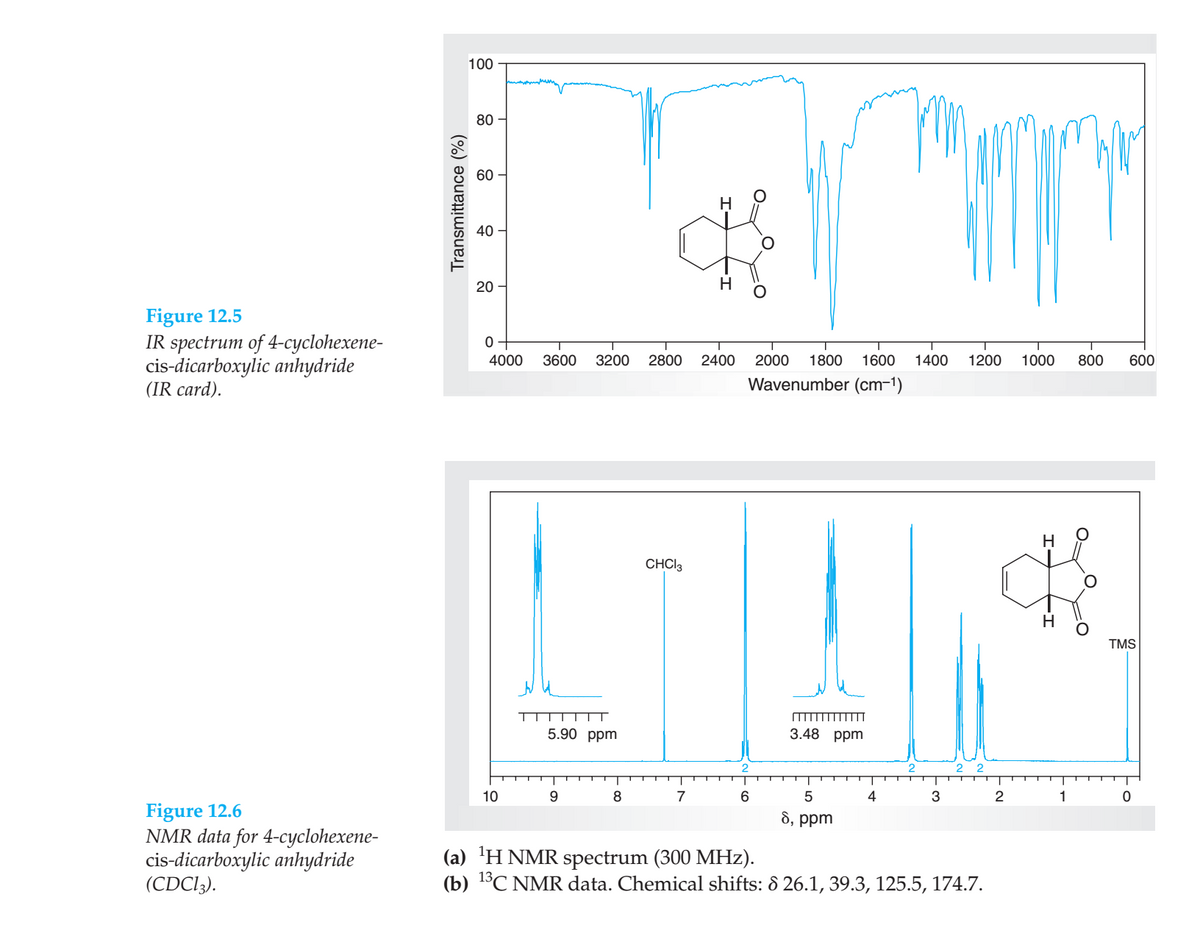this is the spectral data for 4-cyclohexene-cis-1,2-dicarboxylic anhydride 1. Assign the peaks in the region above 1600 cm-1 of the IR. 2. In the 1H NMR spectrum, assign the various resonances to the hydrogen nuclei responsible for them. 3. For the 13C NMR data, assign the resonances to the carbon nuclei responsible for them
this is the spectral data for 4-cyclohexene-cis-1,2-dicarboxylic anhydride
1. Assign the peaks in the region above 1600 cm-1 of the IR.
2. In the 1H NMR spectrum, assign the various resonances to the hydrogen nuclei responsible for them.
3. For the 13C NMR data, assign the resonances to the carbon nuclei responsible for them.

The structure of the unknown molecule can be derived by analyzing the reports of proton-NMR, 13C-NMR, infrared, and mass spectroscopy. Besides, the knowledge about the chemical formula will be highly useful in structure elucidation.
The proton NMR spectra add information about the chemical and magnetically non-equivalent protons present in the molecule. Besides the nature of the splitting pattern indicates the number of protons in the vicinity of the proton of interest. The 13C-NMR spectra give signals corresponding to the number of distinguishable carbon atoms present in the molecule.
Trending now
This is a popular solution!
Step by step
Solved in 2 steps with 1 images




